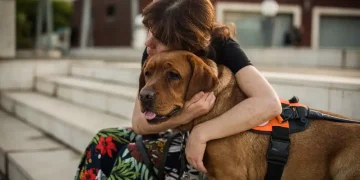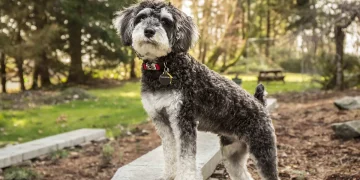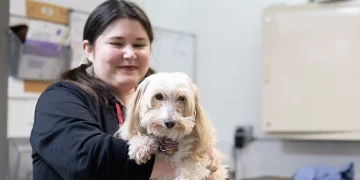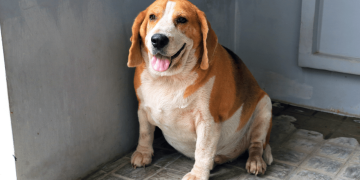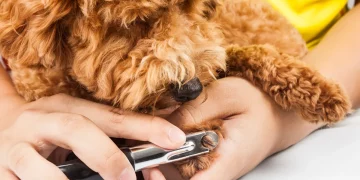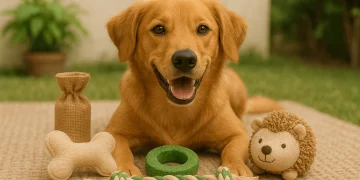Dog cages are a great tool for training dogs to defecate, even when they are alone at home. Although keeping a dog inside may be a bit cruel, there is no doubt that the effect is still very noticeable. As long as the kennel is well trained, dogs will actually be happy to have a special place to sleep. Moreover, in the future, a dog cage will mean a warm home for it, and it will be more convenient for the owner to take the dog with them when they go out. Therefore, a dog cage should be a good place to keep dogs. Do not use dog cages to restrain and punish dogs. So, how to train dogs with Flat noodles
Choose a suitable dog cage
The size of the cage is appropriate. Cages should have enough space for dogs to stand, sit, and stretch their limbs, but do not buy too large cages as dogs may divide the large space into two parts: the excretory area and the sleeping area.
You can purchase two cages of different sizes at once. When dogs are young, they use small cages, and when they grow up, they use large cages.
You can also buy only a large cage, divide the area according to the size of the puppy, and remove the divider when the puppy grows up.
2. Choose the cage you like. There are different prices and a wide variety of dog cages to choose from. Some dog cages look like furniture and can be used as side tables or kennels. Before making a purchase, consider which type of cage is suitable for your dog.
The cage made of hard plastic material has sparse ventilation openings on all sides except for the front door, making it relatively sturdy and suitable for traveling with dogs.
This metal mesh cage will not be bitten by dogs and has a wide field of vision. However, for most dogs, metal mesh cages do not make them feel “at home”, so even if metal mesh cages are the cheapest, this type of cage is not the best choice.
For very small dogs, a dog pen without a bottom or lid is a good choice, but larger dogs may dig holes from the bottom or crawl out from the top, so it is best to have someone at home supervise the use of this cage.
Placing a washable cloth mat at the bottom of the cage would be more comfortable.
3. Place the dog cage in the ideal position. The dog cage should be placed in a busy area and should be frequently placed in this position during the day. This way, your family or yourself will spend a lot of time walking around in front of the dog, and the dog will not feel lonely, especially at night.
4. Create an entertainment environment for the dogs in the cage. If your dog likes toys or pacifiers, put them in a Flat noodles to make the dog think it is an interesting place. Pay attention to the chewiness of the things you put in, so as not to easily suffocate the dog. You don’t want your dog to chew a piece and swallow it, causing intestinal blockage.
If it is a metal mesh cage, it should be covered with a cloth. To make the dog more comfortable, cover the top or edges of the dog cage with fabric. This additional lid will help the dog feel safe. However, it should be noted that any blanket or towel covering can easily be pulled in and chewed by bored or anxious dogs. The solution is to place a wooden board with an area larger than the top of the cage on top, and then cover it with a cloth. The wooden board can spread out the cloth and maintain a certain distance from the walls of the cage, so that the dog cannot reach it.
6. Put some delicious food in the cage. Using delicious food as part of cage training can help dogs see the cage as a place to look for beautiful things. Healthy food and sufficient water are essential, especially if a dog stays in a cage for over two hours, it must be provided with sufficient water and food. You can buy a hamster water dispenser and fill it with water.
The bottom of the cage should be comfortable. Fold up old sheets or towels and place them at the bottom of the cage. If your dog already has a familiar mattress, you can also put it in a Flat noodles. A bed sheet or mattress is not only a comfortable place for dogs to lie in a cage, but also a reminder that the cage is a comfortable place to sleep, not a place to excrete. If your dog poops on the mat, remove the mat as soon as possible to prevent the same thing from happening again. A towel filled with urine not only dirties your home and surrounding environment, but also encourages your dog to keep using this place as a toilet.
How to train a puppy at night
1. Ensure that the puppy is comfortable and quiet at night (adult dogs should also do the same). Even if the dog cage is placed in a busy area during the day, the dog should still be kept in a safe and quiet place at night. Put the Flat noodles in an easy to clean place to prevent your dog from pooping and cleaning. It is better to put it on the tile floor instead of the carpet.
2. Put the dog in a cage at night. If your dog has not undergone complete cage training, be sure to keep it safely in the cage at night. You want to play with the dog until it gets tired, then put it in a cage, give it something to eat to attract it, and then close the door of the cage. Then leave the room where the dog lives, enter the room when the dog barks, but let them out when they don’t bark, or stand next to the cage and watch, without opening the cage door.
Of course, you can also prepare a cardboard box to put your dog inside, especially the puppy is more suitable for packing in the cardboard box. In the first few days of taking your dog home, train him to enter and exit the Flat noodles during the day, put him in a larger cardboard box at night, and then move the Flat noodles to your bed. The downside is that when it gets used to being in front of your bed, it can be a bit difficult to move.
3. Take care of your dog’s excrement at night. The longest interval between bowel movements is 4 hours, so you can set an alarm and bring it to the bathroom every 2-3 hours. Adult dogs may hug longer, but if you are feeding an untrained adult dog, you should also take them to the bathroom every once in a while. When taking your dog to the bathroom at night, be careful not to talk to them, otherwise they may think you want to play with them and their energy may come in.
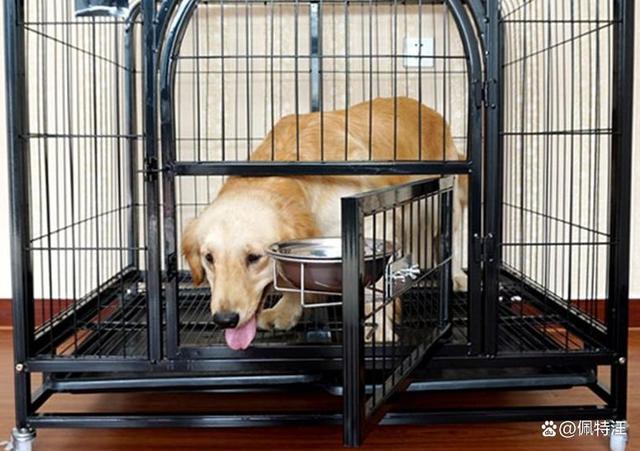
Guide the dog into the cage
1. Do not force the dog into the cage. Never force a dog into a cage and close the door. Similarly, never use a cage to punish a dog. Remember, a dog cage is not a prison, not a place to go in when making mistakes. A dog cage is a place where good things happen and a place to feel safe.
2. Put the dog in a room with a cage first. In this way, the dog will be willing to find its territory and may enter the cage.
The door of the cage should be open. When guiding the dog into the cage, place the dog cage in a suitable position and keep the cage door open. It is better to put a blanket in the cage that smells like a mother or brother or sisters, so that he will be more willing to come in and find out. At this stage, the cage door should remain open so that the dog can freely enter and exit. When the dog treats the cage as a nest, slowly train to close the cage door.
4. Praise your dog more. When the dog enters the cage, warmly praise it. Every time he enters the cage, giving him more care and encouragement will help him see the cage as a positive place.
5. Put some delicious food in the cage. Occasionally, you can put special rewards such as cheese, chicken nuggets, beef, sheep, and pork bones in a cage. Dogs will think that this exciting place is worth exploring because the results of exploration will be rewarded.
6. Feed the dog in the cage. When feeding the dog, make sure the cage door is open. Eating places will make it easier for dogs to remember. If your dog only gets a little bit into the cage, you can slowly move the food tray into the cage. Once the dog is in the cage, you can move the dog tray deeper into the cage and let the dog eat before coming out.
Once the dog is eating happily in the cage, you can close the door of the cage. When a dog is used to eating in a cage and is very happy, consider closing the cage door while it eats. After finishing, open the door. In this way, the dog will gradually get used to the feeling of being locked up.
8. Increase the time to close the cage door. When a dog is accustomed to eating in a cage, the closing time can gradually increase, with the ultimate goal of allowing the dog to accept a 10 minute closing time while eating.
This process should be carried out slowly, gradually increasing the closing time and giving it enough time to adapt. For example, turn it off for 2 minutes while eating, increase it to 5 minutes after 2 days, and increase it to 7 minutes after 2 days.
If the dog makes a whining sound, it indicates that you have increased the closing time too quickly. Next time, you should shorten the closing time.
Always remember that only when the dog is not barking in the cage (when the barking stops), let it go out; otherwise, when it wants to go out, it will make a whimper.
9. Train the “cage” command. When dogs are accustomed to entering a pet cage, they are more likely to issue commands related to entering the pet cage. Once the dog accepts the command, you can use this command to send the dog into the cage.
Choose a command, such as “enter cage” or “enter nest”, and point your finger at the cage when saying the command.
While eating, give orders and then put the food into the cage.
In normal training, when you give a command, if the dog enters the cage, throw some food as a reward.




